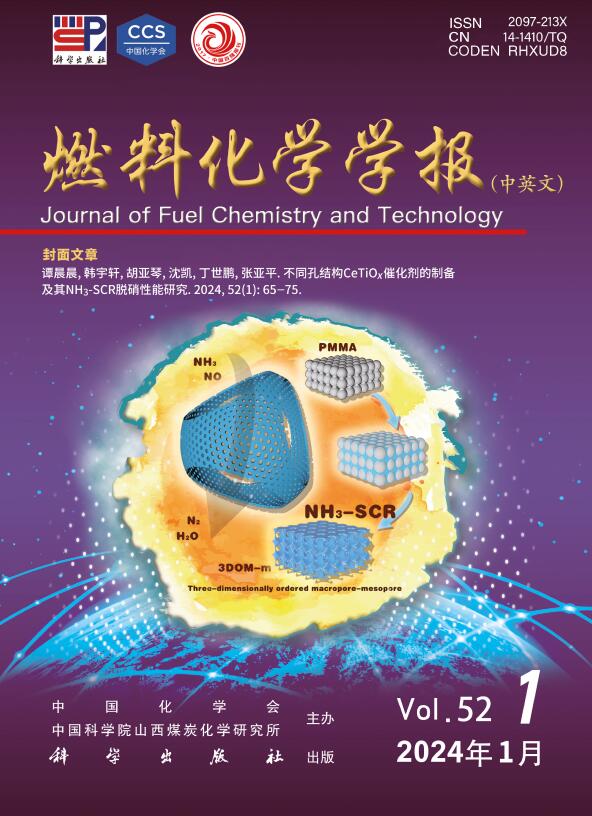Nickel-molybdenum alloy electrodeposited on nickel substrates for optimized hydrogen evolution reaction in acidic electrolytes
Q3 Energy
引用次数: 0
Abstract
The utilization of nickel-based catalysts as alternatives to expensive platinum-based (Pt-based) materials for the hydrogen evolution reaction in acidic electrolytes has attracted considerable attention due to their potential for enabling cost-effective industrial applications. However, the unsatisfied cyclic stability and electrochemical activity limit their further application. In this work, nickel-molybdenum (Ni-Mo) alloy catalysts were successfully synthesized through a comprehensive process including electrodeposition, thermal annealing, and electrochemical activation. Owing to the synergistic interaction of molybdenum trinickelide (Ni3Mo) and molybdenum dioxide (MoO2) in Ni-Mo alloy, the catalyst display superior overall electrochemical properties. A low overpotential of 86 mV at 10 mA/cm2 and a Tafel slope of 74.0 mV/dec in 0.5 mol/L H2SO4 solution can be achieved. Notably, remarkable stability with negligible performance degradation even after 100 h could be maintained. This work presents a novel and effective strategy for the design and fabrication of high-performance, non-precious metal electrocatalysts for acidic water electrolysis.
镍基电沉积镍钼合金,优化酸性电解液中析氢反应
利用镍基催化剂作为昂贵的铂基(pt基)材料在酸性电解质中进行析氢反应的替代品,由于其具有实现经济高效的工业应用的潜力,引起了相当大的关注。但循环稳定性和电化学活性的不理想限制了其进一步的应用。本文通过电沉积、热退火、电化学活化等综合工艺,成功合成了镍钼(Ni-Mo)合金催化剂。在Ni-Mo合金中,由于三氧化二钼(Ni3Mo)和二氧化钼(MoO2)的协同作用,该催化剂表现出优异的综合电化学性能。在0.5 mol/L H2SO4溶液中,可获得低过电位86 mV/ cm2和Tafel斜率74.0 mV/dec。值得注意的是,即使在100小时后,也可以保持显著的稳定性,性能下降可以忽略不计。本研究为设计和制造高性能、非贵金属的酸性电解电催化剂提供了一种新颖有效的策略。
本文章由计算机程序翻译,如有差异,请以英文原文为准。
求助全文
约1分钟内获得全文
求助全文
来源期刊

燃料化学学报
Chemical Engineering-Chemical Engineering (all)
CiteScore
2.80
自引率
0.00%
发文量
5825
期刊介绍:
Journal of Fuel Chemistry and Technology (Ranliao Huaxue Xuebao) is a Chinese Academy of Sciences(CAS) journal started in 1956, sponsored by the Chinese Chemical Society and the Institute of Coal Chemistry, Chinese Academy of Sciences(CAS). The journal is published bimonthly by Science Press in China and widely distributed in about 20 countries. Journal of Fuel Chemistry and Technology publishes reports of both basic and applied research in the chemistry and chemical engineering of many energy sources, including that involved in the nature, processing and utilization of coal, petroleum, oil shale, natural gas, biomass and synfuels, as well as related subjects of increasing interest such as C1 chemistry, pollutions control and new catalytic materials. Types of publications include original research articles, short communications, research notes and reviews. Both domestic and international contributors are welcome. Manuscripts written in Chinese or English will be accepted. Additional English titles, abstracts and key words should be included in Chinese manuscripts. All manuscripts are subject to critical review by the editorial committee, which is composed of about 10 foreign and 50 Chinese experts in fuel science. Journal of Fuel Chemistry and Technology has been a source of primary research work in fuel chemistry as a Chinese core scientific periodical.
 求助内容:
求助内容: 应助结果提醒方式:
应助结果提醒方式:


